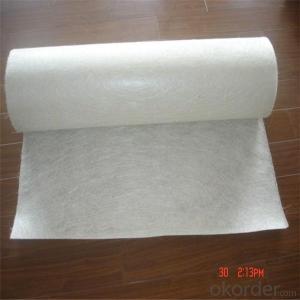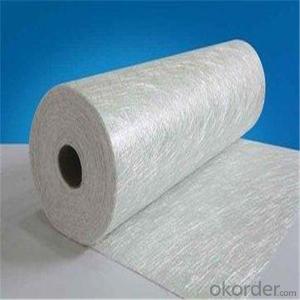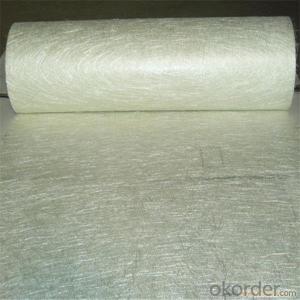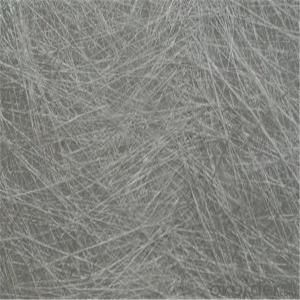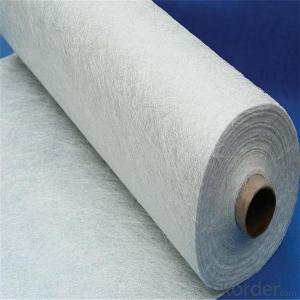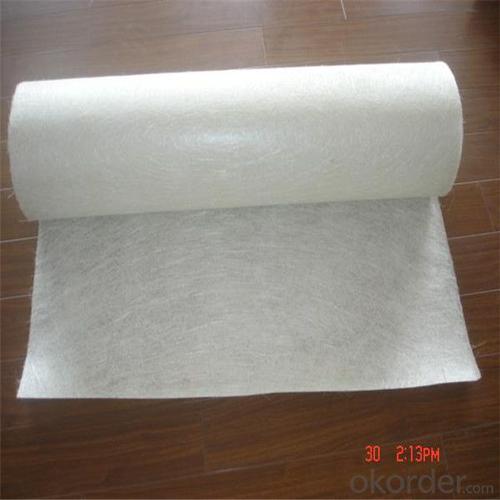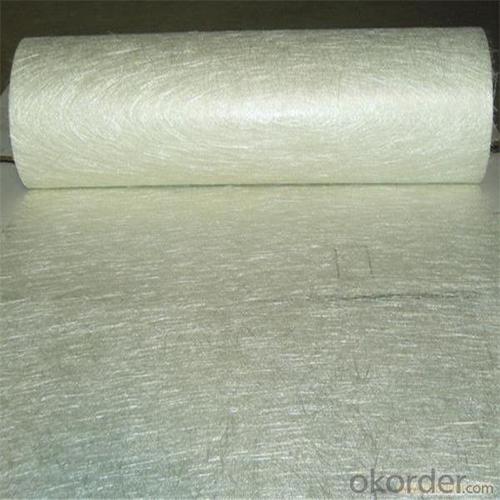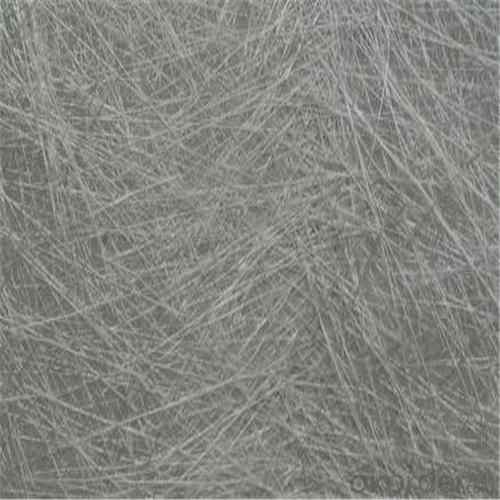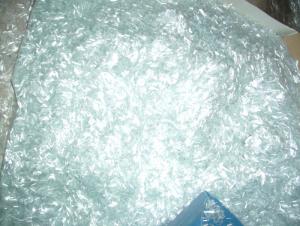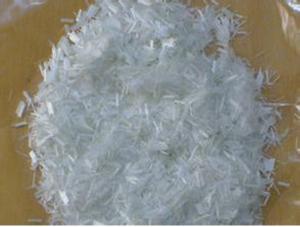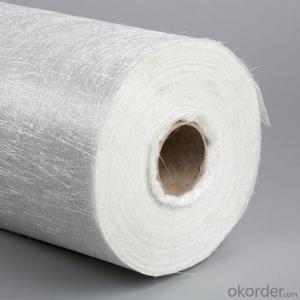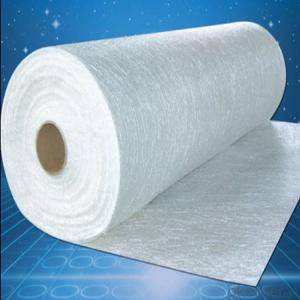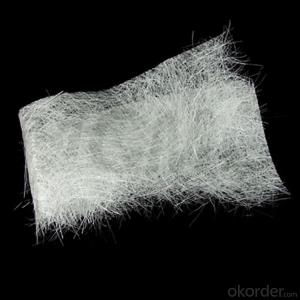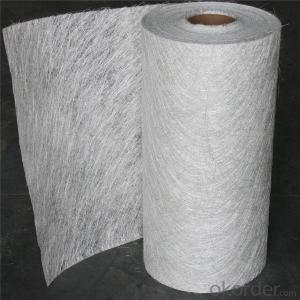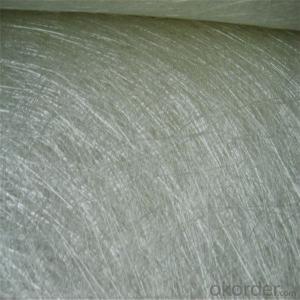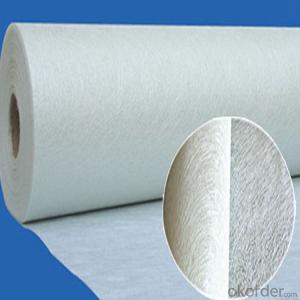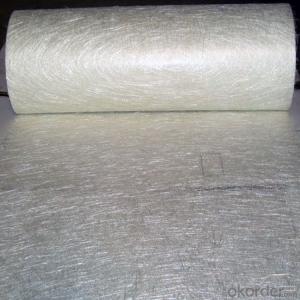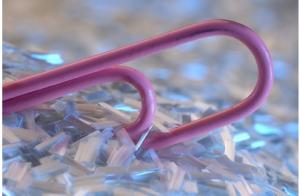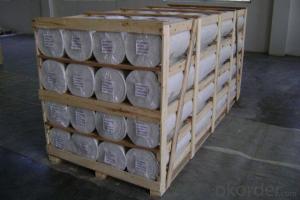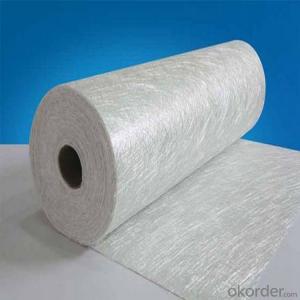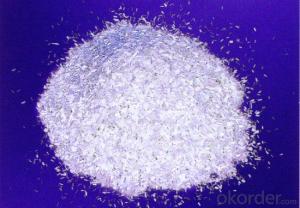Chop Strand Fiberglass Mat - E-Glass Chopped Strand Mat, Woven Fiberglass Cloth
- Loading Port:
- Tianjin
- Payment Terms:
- TT OR LC
- Min Order Qty:
- 100 m.t.
- Supply Capability:
- 10000 m.t./month
OKorder Service Pledge
OKorder Financial Service
You Might Also Like
Quick Details
| Technique: | Chopped Strand Fiberglass Mat (CSM) | Dimensions: | 80g - 900g | Mat Type: | Continuous Filament Mat |
| Fiberglass Type: | E-Glass | Softness: | soft, very soft | Place of Origin: | Shandong, China (Mainland) |
| Brand Name: | cnbm | Model Number: | CSM | material: | fiberglass |
| Glass type: | E glass / C glass | Bond type: | powder or emulsion | Roll width: | 200 - 2600mm |
| Roll weight: | 28 - 55kgs | Density: | 225g/m2, 300g/m2, 450g/m2 | Certification: | ISO, CE |
Packaging & Delivery
| Packaging Details: | standand export packing . or packed as customer's need |
| Delivery Detail: | 10-20days after the contract is effective |
Specifications
Fiberglass Chopped Strand Mat
1.good combination fo resin
2.easy operation
3.good wet strength retention
Specification:
Fiberglass Chopped Strand Mat is an non-woven E- or C-glass fiberglass fabric manufactured by spreading continuous filament rovings of 50mm in length randomly and uniformly in combination with polyester binder in power form (or other binder in emulsion form). Powder or Emulsion fiberglass fiber chopped glass mat
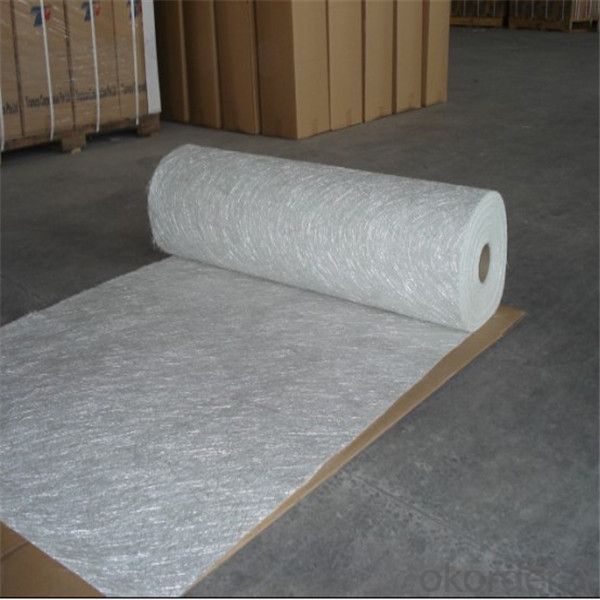
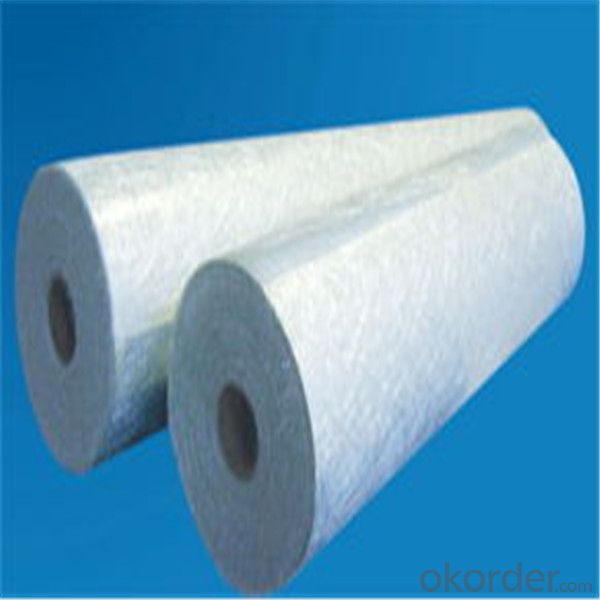

- Q: Can fiberglass chopped strand be used in the production of aerospace interiors?
- Indeed, the utilization of fiberglass chopped strand is viable in the manufacturing process of aerospace interiors. Fiberglass is a highly versatile and lightweight substance that possesses an impressive strength-to-weight ratio, rendering it appropriate for a wide range of applications within the aerospace industry. Chopped strand fiberglass can be effectively employed to fortify composite materials utilized in the production of various aircraft interior components, including but not limited to bulkheads, cabin panels, ceiling panels, and other essential structural elements. This reinforcement ensures heightened durability and rigidity, thereby guaranteeing the structural integrity of these interior components while simultaneously maintaining a lightweight design. In addition, fiberglass chopped strand can also serve as insulation within aerospace interiors, providing valuable thermal and acoustic properties. On the whole, the utilization of fiberglass chopped strand presents numerous advantages that establish it as an ideal material for the production of aerospace interiors.
- Q: How does the length of the fiberglass chopped strand affect its performance?
- The length of the fiberglass chopped strand has a significant impact on its performance. Generally, shorter strands provide better mechanical properties such as tensile strength, impact resistance, and dimensional stability. This is because shorter strands can disperse more evenly within the resin matrix, resulting in a higher fiber-to-resin ratio and better load transfer between the fibers. Shorter strands also promote better wet-out and impregnation of the resin, leading to improved adhesion and bonding between the fibers and the matrix. This enhances the overall strength and stiffness of the composite material. On the other hand, longer strands are usually more cost-effective and easier to handle during processing. However, they may not provide the same level of mechanical properties as shorter strands. Longer strands can also lead to increased fiber entanglement and difficulty in achieving uniform fiber dispersion. In certain applications where flexibility or impact resistance is crucial, longer strands may be preferred. However, for most structural or load-bearing applications, shorter strands are typically more advantageous due to their superior performance characteristics.
- Q: Is fiberglass chopped strand suitable for marine structural applications?
- Yes, fiberglass chopped strand is suitable for marine structural applications. It is a durable and corrosion-resistant material that can withstand the harsh marine environment, making it ideal for use in boat hulls, decks, and other structural components. Its high strength-to-weight ratio and excellent impact resistance also make it a popular choice in the marine industry.
- Q: How does the fiber aspect ratio affect the properties of fiberglass chopped strand?
- The properties of fiberglass chopped strand are significantly influenced by the aspect ratio of the fibers. Aspect ratio refers to the relationship between the length and diameter of the fiber. When the aspect ratio is higher, it means that the length of the fiber is greater in proportion to its diameter. This leads to a higher strength-to-weight ratio and better mechanical properties for the fiberglass chopped strand. Fibers with higher aspect ratios are more effective in reinforcing the matrix material and distributing loads. Furthermore, a higher aspect ratio contributes to improved tensile strength, stiffness, and impact resistance of the fiberglass chopped strand. The longer fibers are able to endure greater stress and strain before failure, resulting in a more durable and damage-resistant material. On the contrary, a lower aspect ratio results in reduced mechanical properties. Fibers with shorter lengths and larger diameters do not provide as much reinforcement to the matrix material, leading to lower strength and stiffness. This can make the material more susceptible to cracking, delamination, and failure under stress. In conclusion, the fiber aspect ratio is a crucial factor in determining the properties of fiberglass chopped strand. A higher aspect ratio enhances strength, stiffness, and impact resistance, while a lower aspect ratio diminishes mechanical properties. Manufacturers and engineers carefully consider the desired properties of the final product when selecting the appropriate fiber aspect ratio for the application at hand.
- Q: Is fiberglass chopped strand compatible with phenolic modified resin?
- Yes, fiberglass chopped strand is generally compatible with phenolic modified resin. Fiberglass chopped strand is a reinforcing material that is commonly used in composite applications, while phenolic modified resin is a type of thermosetting resin that has excellent heat and chemical resistance properties. When combined, the chopped strand reinforces the resin and improves its mechanical strength, making it suitable for various applications such as automotive parts, marine components, and electrical insulation. However, it is always recommended to conduct compatibility tests or consult with the resin manufacturer to ensure optimal performance and compatibility between the fiberglass chopped strand and phenolic modified resin.
- Q: Can fiberglass chopped strand be used in filtration applications?
- Yes, fiberglass chopped strand can be used in filtration applications. Fiberglass chopped strand is made up of small fibers that are randomly oriented and bound together. This creates a three-dimensional structure with high surface area, which is ideal for filtration purposes. The fibers can effectively trap and remove particles, contaminants, and impurities from a fluid or gas stream. Fiberglass chopped strand can be used in various filtration applications such as air filters, water filters, oil filters, and chemical filters. Its high mechanical strength, chemical resistance, and thermal stability make it suitable for demanding filtration requirements. Additionally, fiberglass chopped strand can be easily molded or formed into different shapes or sizes, allowing for customization and compatibility with different filtration systems.
- Q: How does the fiber length affect the properties of fiberglass chopped strand?
- The properties of fiberglass chopped strand are significantly influenced by the length of its fibers. To begin with, the strength and mechanical properties of the fiberglass are directly affected by the fiber length. Fibers that are longer have a higher aspect ratio, meaning their length is greater in comparison to their diameter. This aspect ratio enhances the fiberglass's load-bearing capacity and tensile strength. Furthermore, longer fibers provide a larger surface area for bonding with the resin matrix, resulting in improved adhesion and overall mechanical performance. Additionally, the impact resistance and toughness of the fiberglass are influenced by the fiber length. Longer fibers have a tendency to dissipate energy more effectively, allowing them to absorb and distribute impact forces across a wider area. This enhanced impact resistance is particularly advantageous in applications where the fiberglass may experience high levels of stress or impacts. Furthermore, the stiffness and dimensional stability of the fiberglass are impacted by the fiber length. Longer fibers offer increased rigidity and resistance to deformation, leading to improved dimensional stability. This is especially important in applications that require the fiberglass to maintain its shape and resist warping or bending under load. Moreover, the fiber length can affect the processability and handling characteristics of the fiberglass. Shorter fibers are generally easier to mix and disperse within a resin matrix, making them more suitable for applications that require good flowability and uniform distribution. On the other hand, longer fibers can present challenges in processing due to their tendency to clump or become tangled, necessitating the use of specialized equipment and techniques for effective dispersion. In conclusion, the fiber length is a vital factor in determining the strength, impact resistance, stiffness, and processability of fiberglass chopped strand. Selecting the appropriate fiber length based on the specific requirements of the application is crucial to ensure optimal performance and desired properties.
- Q: What are the fire insulation properties of fiberglass chopped strand?
- Fiberglass chopped strand possesses exceptional properties, which make it a widely utilized material for fire insulation. Its remarkable resistance to heat and ability to withstand high temperatures without compromising its structural integrity contribute to its effectiveness as a barrier against fire and heat transmission. The composition of fiberglass chopped strand is the primary reason behind its efficacy as a fire insulation material. It consists of densely packed fine glass fibers capable of entrapping air within their structure, thereby creating a layer of insulation. This trapped air acts as a buffer against heat and hinders its transfer to the opposite side of the insulation. Moreover, fiberglass chopped strand is inherently non-combustible, meaning it does not burn or support combustion. This characteristic is crucial for fire insulation as it ensures that the material does not contribute to the spread of fire and provides an added layer of safety. Additionally, fiberglass chopped strand exhibits low thermal conductivity, indicating its poor ability to conduct heat. This quality renders it an efficient insulator, effectively slowing down the transfer of heat through its structure and safeguarding the surrounding areas from the intense temperatures of a fire. In conclusion, the fire insulation properties of fiberglass chopped strand are excellent. Its ability to withstand high temperatures, non-combustible nature, and low thermal conductivity combine to make it an effective material for preventing the spread of fire and protecting surrounding areas from heat-related damage.
- Q: What are the fatigue resistance properties of fiberglass chopped strand?
- Fiberglass chopped strand exhibits remarkable resistance to fatigue, enabling it to endure repetitive loading and cyclic stress without suffering from structural failure or deformation. This material is widely recognized for its outstanding fatigue resistance, rendering it suitable for applications that demand long-term performance and durability under cyclic loading conditions. The unique physical and mechanical properties of fiberglass chopped strand account for its fatigue resistance. Comprised of individual glass fibers that are randomly arranged and bound together, this material allows for the even distribution of stress and load across its entirety, thereby reducing stress concentration at specific points and enhancing its resistance to fatigue. Furthermore, fiberglass chopped strand possesses notable tensile strength and stiffness, which further bolster its fatigue resistance. The strong bond between the glass fibers and the binder ensures that the material can withstand the repeated stress and strain cycles typically associated with fatigue loading. It is worth noting that the fatigue resistance properties of fiberglass chopped strand can vary depending on factors such as the type and quality of the glass fibers, the binder material used, and the manufacturing process. Consequently, it is crucial to consider these factors when selecting fiberglass chopped strand for applications that necessitate high fatigue resistance. In summary, fiberglass chopped strand offers exceptional fatigue resistance, making it a dependable choice across various industries, including automotive, aerospace, construction, and sports equipment. Its ability to endure cyclic loading without significant degradation or failure makes it an enduring and resilient material for demanding applications.
- Q: Is fiberglass chopped strand compatible with other reinforcement materials?
- Yes, fiberglass chopped strand is compatible with other reinforcement materials. It can be combined with other materials such as carbon fiber, Kevlar, or natural fibers to create hybrid composites with enhanced mechanical properties. The combination of different reinforcement materials can lead to improved strength, stiffness, and impact resistance in the final composite product. Additionally, fiberglass chopped strand can also be used in conjunction with thermoplastic or thermosetting resins to create composite materials that are suitable for various applications in industries such as automotive, aerospace, construction, and marine.
Send your message to us
Chop Strand Fiberglass Mat - E-Glass Chopped Strand Mat, Woven Fiberglass Cloth
- Loading Port:
- Tianjin
- Payment Terms:
- TT OR LC
- Min Order Qty:
- 100 m.t.
- Supply Capability:
- 10000 m.t./month
OKorder Service Pledge
OKorder Financial Service
Similar products
Hot products
Hot Searches
Related keywords
